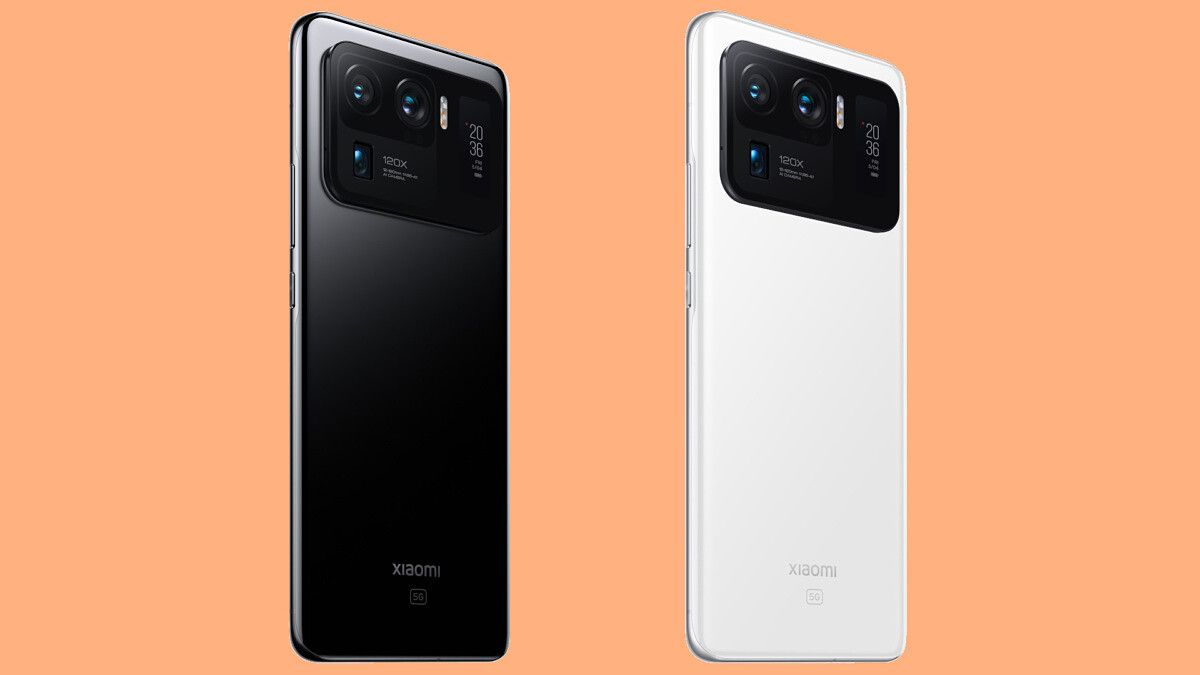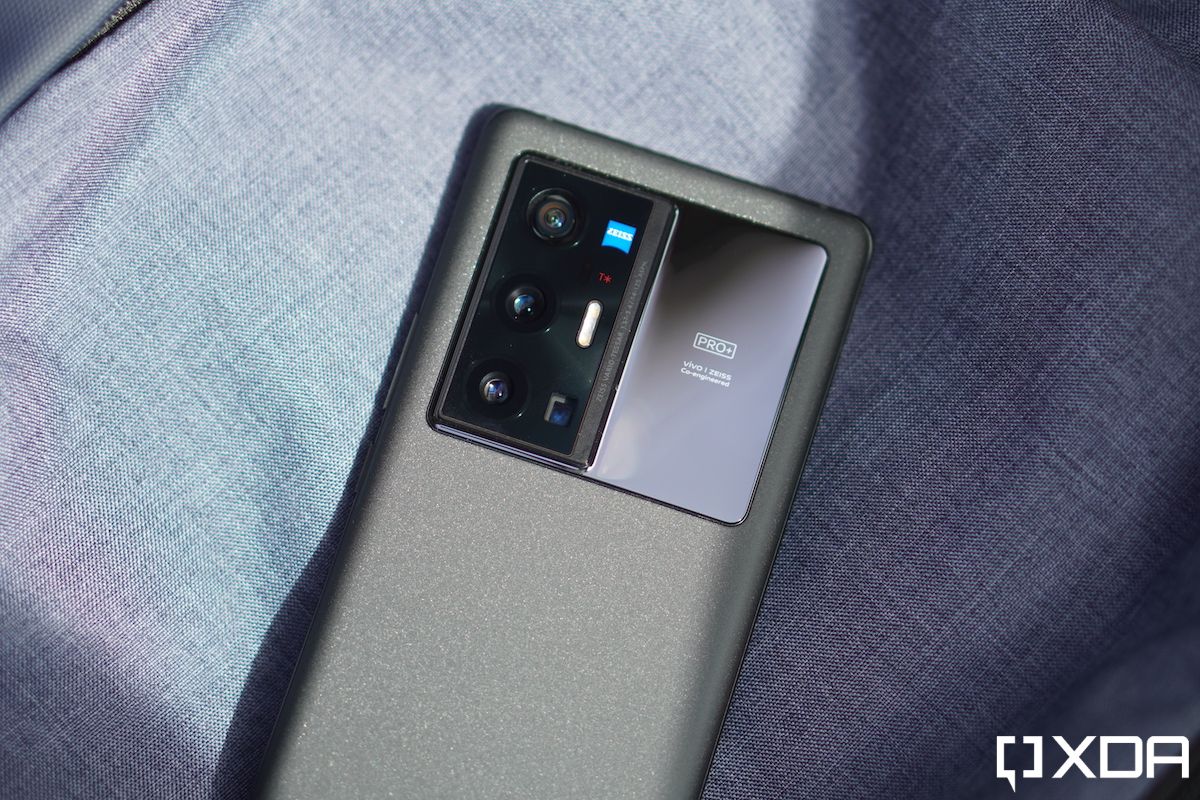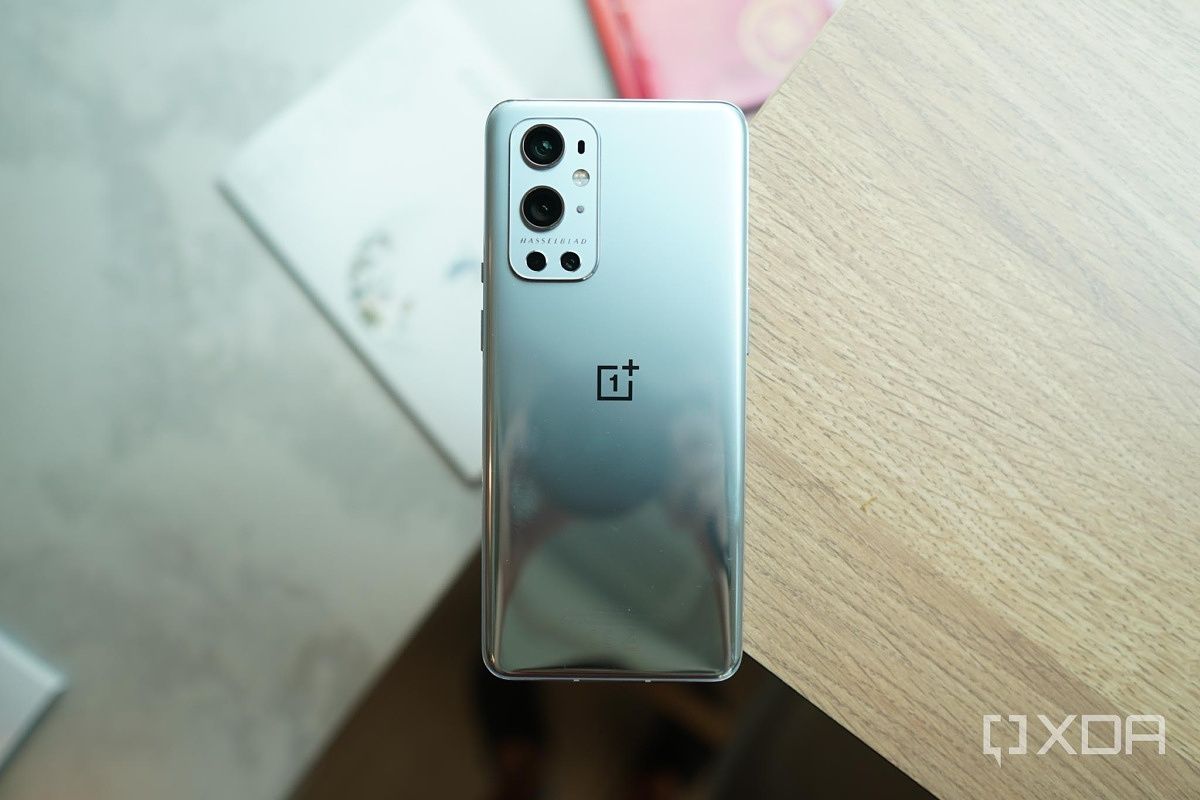Picking the phone with the best camera used to be an easy exercise. In the early days of the smartphone, the iPhone’s camera was leaps and bounds better than Android’s offerings. Then big-name Android brands caught up and for a couple of years in the mid-2010s Samsung held the crown.

Mobile cameras today have become so capable and diverse that it’s impossible to just say one phone is the absolute best, as all of the best smartphones have great cameras — many with a unique trick or two. So in my opinion, the best way to evaluate these cameras is to break them down into different shooting categories.
![]()
We here at XDA have tested almost every smartphone that sees release — even the obscure, China-only ones — and here’s our breakdown on the best cameras for each specific need.
Navigate this article:
- Best camera system for versatility: Samsung Galaxy S21 Ultra
- Best camera for daytime photos: Google Pixel 6 Pro
- Best camera for nighttime or low light photos: Vivo X70 Pro Plus
- Best camera for portraits: Google Pixel 6/6Pro
- Best ultra-wide camera: OPPO Find X3 Pro/OnePlus 9 Pro
- Best selfie camera: Vivo V21
- Best zoom cameras: Samsung Galaxy S21 Ultra
- Best camera for video: iPhone 13 Pro/Pro Max
- Best camera software and features: Xiaomi Mi 11 Ultra
- Conclusion
Best camera system for versatility: Samsung Galaxy S21 Ultra

With no Galaxy Note phone this year, the Samsung Galaxy S21 Ultra has a longer than usual reign atop Samsung’s slab smartphone pecking order, and this one deserves the throne. It’s the most capable and versatile camera system overall in all smartphones right now. The Galaxy S21 Ultra features a 108MP camera, producing super sharp and vibrant photos, a 12MP ultra-wide that offers one of the widest field-of-view around without noticeable distortion, two zoom lenses covering the 3x and 10x zoom range, and software smarts allowing it to digitally zoom all the way to 100x. You even have a really good macro mode that allows really close-up shots. But words can only say so much — we’ll let these photo samples do the talking.






It’s not just hardware though; Samsung’s camera software and image processing has improved to make the shooting experience better. Bring the Galaxy S21 Ultra close to an object for example, and that macro mode kicks in without you needing to do a thing. Shoot in low night scenarios, and night mode turns on automatically. Zoom to 50x and beyond, and the “Zoom Lock” feature enables the viewfinder to stay still despite shaky hands — this feature is useful for shooting the moon.


The Galaxy S21 Ultra camera system isn’t perfect — it tends to oversharpen selfies, and there’s an ever-so-subtle shutter lag. But still, if you want the best overall, most versatile system that doesn’t fail in any single category, this is the system, with only the next phone on this list reasonably within range to challenge the throne.
- With four cameras covering every spectrum of the focal length and some intelligent shooting modes, the Samsung Galaxy S21 Ultra is the most versatile camera system around.
Best camera for daytime photos: Google Pixel 6

If you want a camera that you can point, tap shutter button, and be confident you got a great shot, our pick is the Google Pixel 6 or Pixel 6 Pro. Google upgraded the main camera sensors for both phones this year, to a 50MP GN1 sensor with a large 1/1.31-inch sensor. This means the camera naturally pulls in light, and has a shallow focus pane, so most shots with a clear subject in foreground will have aesthetically pleasing bokeh around it to separate the subject (or object) from background.
Google’s computational photography prowess is, of course, still here to back up the awesome sensor, so even if you’re shooting against direct backlight, expect properly balanced shots with stunning HDR. And if your shot happen to have unwanted elements (maybe a trash can in frame, or someone walking into the shot), Google’s Magic Eraser may be able to wipe that unwanted distraction from the background too. It doesn’t always work, but when it works, it’s magic indeed. Just look at these photo samples, all captured with the Pixel 6 or 6 Pro.






- The Pixel 6 Pro has the same awesome cameras the Pixel 6 -- plus a 4x optical zoom lens too.
- The Pixel 6 has a 50MP main camera that can capture great shots -- especially during the day.
Also great: Xiaomi Mi 11 Ultra

We chose the Xiaomi Mi 11 Ultra over other strong contenders because its main camera has the largest image sensor size (1/1.12″) of all released phones right now (Sharp’s Aquos R6 has an even larger sensor, but its image processing is inferior). That larger sensor has a shallower depth-of-field, which results in photos or videos with a natural bokeh effect if there’s an object/subject in the foreground. It’s a pleasing aesthetic that looks closer to photos produced by a real camera.



- The main camera of the Xiaomi Mi 11 Ultra features the largest image sensor in the smartphone industry right now, allowing it to take in a lot of light and produce natural depth-of-field background separation between subject and backdrop.
Best camera for nighttime or low light photos: Vivo X70 Pro Plus

We recently did a comprehensive camera test and came away deciding that the Vivo X70 Pro Plus is arguably the best camera phone of the year, and it mostly come down to its strength in low light environments. Using the same 50MP sensor as the Pixel 6 Pro but with a faster aperture, the Vivo X70 Pro Plus main camera can pull in light out of thin air, and thanks to a dedicated V1 ISP chip, Vivo’s HDR is stunningly good, perhaps topping even Apple and Google.
For general night photos out in the city, the Vivo X70 Pro Plus produces noise-free, sharp, and vibrant images — without the need to resort to night mode.






- If you take photos in low light conditions often -- then look no further than the Vivo X70 Pro Plus.
Best camera for portraits: Google Pixel 6 and Pixel 6 Pro

Google’s computational photography is second to none, as evident by the fact that for years, its Pixel phones were able to produce the best portraits with a bokeh effect despite using only one camera (while other phones marketed the use of a dedicated depth sensor for the task). The below samples were captured by the Pixel 6 Pro, but the standard Pixel 6 will produce the same shot.


What sets Pixels apart from other phones is Google’s computational smarts can also produce convincing bokeh around inanimate objects, while other phones (notably iPhones) really only can do portrait shots around human faces.


But because the Pixel 6 series has a main camera with a large image sensor, this means even if you don’t want to shoot in portrait mode, you may still get some pleasing natural bokeh anyway if your subject/object is close enough to the lens.


If you want bokeh in your smartphone photos, the Pixel 6 series is the best at the job.
- The Pixel 6 Pro has the same awesome cameras the Pixel 6 -- plus a 4x optical zoom lens too.
- The Pixel 6 has a 50MP main camera that can capture great shots -- especially during the day.
Best ultra-wide camera: OPPO Find X3 Pro/OnePlus 9 Pro


When I reviewed the OPPO Find X3 Pro back in March, I said it had the best ultra-wide angle camera I’ve ever tested. Less than a month later, another phone’s ultra-wide matched that performance — by using the exact same sensor (and likely manufactured on the same assembly line).
That 50MP Sony IMX 766 sensor uses freeform lens technology to allow for distortion-free ultra-wide images, and both brands have done a magnificent job of fine-tuning the sensor to fit into its system. Color sciences differ slightly, but for the most part, they produce very similar ultra-wide shots that are sharper than Samsung’s and Apple’s ultra-wides.




Because the Find X3 Pro and OnePlus 9 Pro’s ultra-wide sensors are so pixel-dense, they keep enough details to keep pace with the main camera. I love that with both of these phones I can capture a standard wide photo and then an ultra-wide and know the two photos will be consistent in sharpness, dynamic range, and color science.


- The Google Pixel 5a brings arguably the best point-and-shoot camera experience with excellent colors and dynamic range during the day.
- The OnePlus 9 Pro's ultra-wide camera uses the exact same sensor as the OPPO Find X3 Pro's -- so expect the same excellent ultra-wide photos.
Best selfie camera: Vivo V21

Vivo’s V series has always prioritized the front-facing camera above all else, and the Vivo V21‘s 44MP selfie camera with two flashes and OIS takes the crown here.


It’s not just hardware, however — Vivo’s selfie software also offers granular controls, from the level of background blur to several different flash lighting options to an excessive beautifying mode that can apply digital makeup. Notice in the third and fourth picture of the below samples, I shot against a very harsh backlight, but the selfie still managed to highlight my face without blowing out the backlight.




The in-built OIS reduces potential blurry shots during low light selfies (when the camera either slows shutter speed or turns on night mode), or walk-and-talk style vlogs.
Best zoom cameras: Samsung Galaxy S21 Ultra

The Galaxy S21 Ultra at 30x with zoom lock enabled.
As we already spoiled in the “Best Overall” category, the Galaxy S21 Ultra has the most capable zoom system around. In the sample below, whether it’s 10x, 30x, or 50x zoom, the Galaxy S21 Ultra produced a sharper, less noisy image than the Xiaomi Mi 11 Ultra, whose own zooming prowess is no slouch.








As mentioned, the Huawei P40 Pro Plus actually pioneered most of the zooming tech used in the Galaxy S21 Ultra, and for the most part, both camera systems are neck and neck in terms of zoom shot quality. However, the Galaxy S21 Ultra takes the win because of the “Zoom Lock” software that automatically keeps the viewfinder still when zooming beyond 10x.


Best camera for video: iPhone 13 Pro/Pro Max

Most flagship smartphones can capture high-quality videos now, but the iPhone 13 series, particularly the Pro phones, still takes the win because it has the best combination of stabilization, the ability to adapt to changing exposure, and the option to shoot with somewhat natural looking digital bokeh. The iPhone 13 Pro and Pro Max can also seamlessly switch between all three lenses in the middle of filming, meaning you can go from ultra-wide lens all the way to 3x zoom and beyond and the video will appear mostly fluid, without the noticeable jerkiness that happens when you do the same lens switch in, say, a Galaxy S21 Ultra.
But we’re particularly fond of the new Cinematic Mode, which as mentioned earlier, creates artificial bokeh around a subject. It’s not going to fool a professional eye, but to untrained eyes, the footage looks a bit more professional, with added depth, than a typical flat smartphone video. See the sample below for yourself.
- The iPhone 13 Pro allows seamless switching between all three lenses mid-filming, which is something Android phones still struggle with. Throw in superior stabilization and exposure, and this makes it the best camera phone around.
Best camera software and features: Xiaomi Mi 11 Ultra
If we’re talking about just the UI of the camera app, how easy is it to cycle through different shooting modes? How responsive is the camera? I’d give the win to the OnePlus’ camera app. But once we factor in additional features that produce a different image, then I don’t think any camera software right now comes close to Xiaomi’s.





Xiaomi’s MIUI 12 and its camera app has a comprehensive manual mode with focus peaking, a histogram, and quick dials to adjust ISO and shutter speed. The regular camera interface is easy to use with all the key buttons including zoom dial and selfie camera swap within thumb’s reach. But it’s the additional shooting modes that make the software so fun to use. For example, Xiaomi’s camera app includes an “AI Sky Editor” that allows the user to add a filter to any photos that are showing the sky.





This feature could have easily been tacky and garish, but the results are actually quite realistic and aesthetically pleasing.






Another fun trick is clone, which lets most recent Xiaomi phones quickly clone multiple instances of the same subject in one shot. Sure, there are computer photo editing software and perhaps even apps that can do the same tricks, but Xiaomi having these features built into the camera app makes it so much more accessible.

The clone feature is part of Xiaomi’s camera app.
It works with both photos and videos.

Conclusion: Smartphone cameras are getting really, really good
There’s a popular saying: “the best camera is the one you have with you.” For almost all of us, that would be the smartphone camera — and we’re blessed to live in an era when smartphone cameras have grown so capable. Sure, professional photographers will always scoff at the idea of a smartphone ever being able to replace the need for a real camera. But for most people, that’s already the case. When you travel to a tourist spot, do you see more smartphone cameras or DSLRs?
Obviously, if you want the most versatile system that covers all the bases, the Galaxy S21 Ultra is the one to get. However, if you want the best photos in all conditions, then the Vivo X70 Pro Plus beats even the Galaxy S21 Ultra in low night and ultra-wide shots. Likewise, if you’re a longtime iOS user and don’t want to switch, the iPhone 13 series is still a highly polished camera with some of the best HDR technology around.
The thing is, the year isn’t over and there will be some major contenders to come from Google and Apple. And if any upcoming releases outperform phones on this list, we’ll update accordingly. So check back regularly to keep up to date on this competitive mobile camera arms race.
The post The Best Smartphone Cameras in 2021: Apple, Samsung, Xiaomi, Google — We’ve tested them all! appeared first on xda-developers.
from xda-developers https://ift.tt/3fRicJb
via IFTTT






Aucun commentaire:
Enregistrer un commentaire